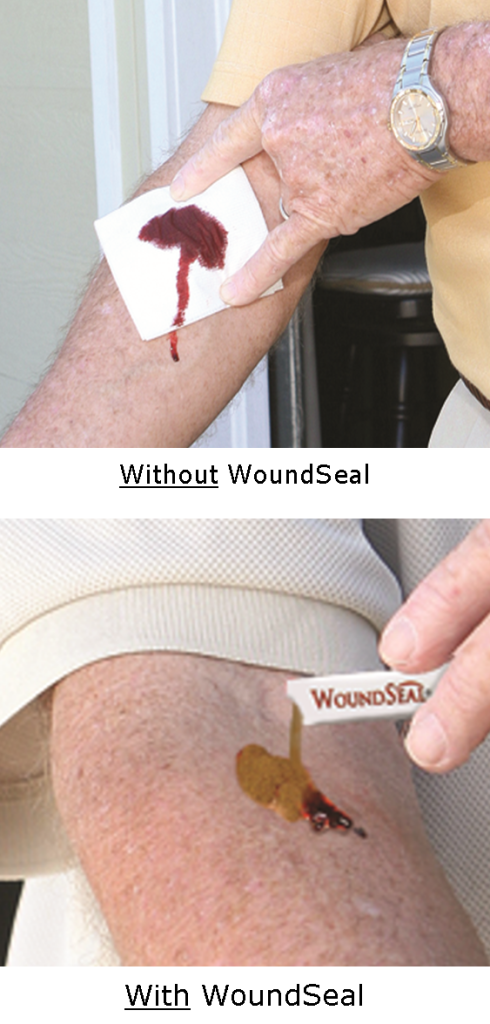5 Tips For Protecting Thin Skin As You Age
While a lot of health news talks about the perils of medications and certain diseases as we age, perhaps there is no greater nuisance to an active senior than thin skin. Aging, sun exposure and genetics all play a role in thinning skin. Certain medications, such as long–term use of oral or topical corticosteroids, also can weaken skin and the blood vessels in the skin.
The slightest elbow bump on a door and knee bump on a coffee table can break open the skin and cause us to bleed. Yet when we suffer an accidental skin tear, for some reason, we’re still using traditional gauze, tape and adhesive bandages. With today’s available science, using these products is the equivalent to using a horse and buggy instead of a sports car.
 Instead of using traditional aids that don’t work for active seniors, millions are using what doctors use in hospitals and clinics: a hemostatic topical powder called WoundSeal that works by forming an instant scab to stop bleeding instantly.
Instead of using traditional aids that don’t work for active seniors, millions are using what doctors use in hospitals and clinics: a hemostatic topical powder called WoundSeal that works by forming an instant scab to stop bleeding instantly.
When a skin tear happens, simply pour the powder onto the bleeding wound, press it into place and in seconds, a scab is formed that seals and protects the wound. In no time at all, you are back into your activity without waiting minutes, hours or even days like you do with traditional first aid products.
To protect thin skin and prevent tears and cuts (Source: Mayo Clinic):
Wear long–sleeved shirts, long pants and wide-brimmed hats. Consider wearing two layers to protect the forearms when doing yardwork or gardening, common areas for minor injury to the skin.
Avoid prolonged sun exposure. If you must be outside in the sun, use a broad–spectrum sunscreen with an SPF of at least 15. Apply sunscreen generously, and reapply every two hours — or more often if you’re swimming or perspiring.
Keep skin well–moisturized and protected by using a good moisturizing cream.
Talk to your doctor about treating skin with vitamin A (retinol), which may improve the skin’s ability to tolerate injuries.

